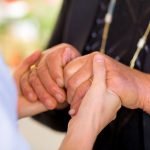the Emergence of fhe iANP: Right Time, Right Place
David J. Schleich, PhD
There is a certain irony to the proliferation of interest in “integrative medicine” around the Globe, and more particularly here in the United States. As I have suggested in earlier columns, the wide adoption of holistic therapies and modalities, guarded for a century by naturopathic professionals, has a somewhat pernicious element to it. The biomedicine profession and industry in North America these days is positioned in terms of public policy and regulatory frameworks to assimilate what it wishes, largely with impunity. However, globally, the territorial demarcations which decide who controls what, are less defined. There is the public domain complexity of Australian naturopaths compared to, say, the fact that even a properly trained naturopathic doctor residing in Italy cannot prescribe an homeopathic. Whatever the jurisdiction, however, there are enduring concerns about developing and sustaining a health model appropriate for the international community and that model must include naturopathic professionals from all kinds of countries.
The 194 members of the World Health Organization, for example, monitor global health concerns ranging from health systems (technologies, medicines, financing, workforce) through a panoply of focuses such as women and health, urban health, mortality/morbidity in various jurisdictions, infectious diseases, road safety, substance use, environmental health and more. The WHO’s Millennium Development Goals (MDGs) are impressive: children’s health, maternal and reproductive health, HIV/AIDS, malaria, water and sanitation, essential medicines, tuberculosis, and neglected tropical diseases.
Naturopathic communities in many countries contribute to these challenges every day. In that context, Evidence-based medicine (EBM) proclaims itself to be the anchor of disease management. The social construction of chronicity, an element in naturopathic philosophy and traditions, exists juxtaposed to biomedicine in many countries. Ranging from the accreditation rigour of the U.S.A. and Canada for naturopathic doctors, many of whom are primary care physicians with a pharmacopeia not unlike that of allopathic professionals, to the public domain frameworks of practice in countries such as Spain where the formation of a professional presence for naturopathic doctors is in its beginning stages. In any case, the status of the ND is unequal and misunderstood in many places, sometimes in regional jurisdictions within a single country. As well, the professional preparation of naturopaths, naturopathic doctors and naturopathic physicians is substantially differentiated and segmented.
The goal of the steering committee of the inaugural International Congress of Naturopathic Medicine (ICNM) held last July in Paris, France, was, in addition to continuing medical education, to clarify, understand, strengthen and grow the varying roles of naturopaths in many countries across the globe. In a time when the management of chronic diseases comes at a massive cost to both the individual and to the health system in which s/he finds himself or herself living, poor health care infrastructure is rampant and such a vision is timely. Naturopathic medicine has much to contribute to these challenges.
What follows here is a modest proposal for establishing an on ramp for a more deliberate, international process supporting the professional formation of naturopathic professionals. Beginning with the founding congress itself (2013), there may be a window in the upcoming congress to establish an association of naturopathic professionals which begins the important work of strengthening naturopathy’s presence in medical systems worldwide. At its next congress, for example, the conference committee of the ICNM might invite a robust dialogue about the components of an association of Naturopathic Professionals. Key to launching this effort is to have one eye on the immediate work of avoiding ethno-centric definitions, at the same time as having the other eye on a future where standards can be identified, described, considered and adopted on a global basis. A working “name” for such a body could be: The International Association of Naturopathic Professionals (IANP). Its “ramp up” work could take up the rest of this decade, at the very least. Not only would a group of interested professionals need to assemble and begin to organize, there would follow the complicated work of ratifying membership grounded in the long term objectives of the organization, as well as the dangerous political terrain of ratifying professional standards. All the while this work is going on, say between 2014 and 2020, the congress would continue to meet. The IANP would have its home base in Europe, likely Luxembourg.
The IANP could have three functioning bodies to begin this work, connected by common goals and aims, but also separated by function. These would include the IANP Standards Council, the IANP membership itself, and the IANP’s Training Institute.
IANP
The IANP itself would be the parent organization, the International Association of Naturopathic Professionals. This association could have an executive board, elected by the general membership, and a set of bylaws which guide its operation. The IANP might be incorporated in Luxembourg, a jurisdiction in the European community more conducive to such international bodies than most. Among its members are the leaders of the NPTI (Naturopathic Professionals Training Institute) and the IANPSC (International Association of Naturopathic Professionals Standards Council), elected by the membership of the IANP to these roles for specified terms and within guidelines for mandate. The IANP would be member-driven. Association fees to pay for the IANP and its affiliate agencies’ work would always be ratified by the membership within the IANP itself.
NPTI
This body could be the education and training arm of the IANP. It would generate opportunities for skills development, including didactic and clinical training, which reflect the various naturopathic medical education programs in many countries. The NPTI could have a standing committee which plans and implements an annual, international congress (currently known as the ICNM, or International Congress of Naturopathic Medicine) which invites members and guests who are practicing naturopathic professionals and others who have a clinical, research or professional interest in naturopathic medicine. The Congress sessions, presentations, workshops, seminars, research exhibits and general speaker agenda would be approved, once developed, by the IANPSC (Standards Council of the IANP). The NPTI would communicate on a regular basis with naturopathic associations, agencies and individuals globally, consistent with the mission, goals and current business plan of the IANP. Along the continuum of 2014-2020, the NPTI might want to consider training programs (apart from individual CME events or offerings) which could be of value to members in particular countries.
IANP Standards Council
The IANPSC (International Association of Naturopathic Professionals Standards Council) could be appointed by the executive board of the IANP and the appointees ratified by the membership of the IANP every third year at its congress. This body would be dedicated to describing the current standards of naturopathic education and clinical practice in each jurisdiction reflected in the IANP membership. The mission of the Standards Council could be to recommend minimum standards which are respectful of varying scopes, accreditation, registration, certification and licensing contexts in which IANP members operate. The IANPSC could also operate as an information resource for the IANP. The IANPSC could approve Continuing (Medical) Education offerings made available by the IANP at its annual congress (the annual ICNM), as well as on-line, and in separate real-time, in person events in various countries.
Generating standards for operation and strategic planning.
Should the current ICNM (conference planning) board wish to begin the work of establishing the IANP association, it would be important to clarify parameters of action and mandate. Ultimately, the IANP board, once elected by the general membership of the IANP itself, such work beginning before and continuing during and after the 2014 Congress in Paris, the NPTI and the IANPSC could also begin their work of establishing the setting not only standards, but establishing the content to conform to those standards of education, clinical care and research. The following definitions and descriptions are top of mind in suggesting to any committee charged with doing this work in the coming early years of the IANP’s evolution. Chief among those considerations is a good understanding of the similarities and differences among standards, competencies and learning outcomes which can affect members and the associations with which those members are aligned or affiliated.
Standards
Standards in post-secondary education in many countries are set up, by consent of experts or by decision of educational authority, as “model designs or formulations” related to different aspects of education such as ‘content’, ‘method of delivery’, ‘type of evaluation or measurement of learning” and ‘appropriate learning resources’. These, in any case, are presented in such way as to make possible assessment of graduates’ performance to comply with some future declaration of the professional requirements established by the IANP, delivered by various colleges and universities in a variety of countries, leading to registration, certification and licensing in some jurisdictions, and defining scope in public domain jurisdictions as necessary. The IANPSC could be an information-gathering, research and advisory body in this work, but does not have jurisdiction in any particular country. Even so, the IANPSC could describe for the public, for government officials, for other health care professions and their organizations, key elements of naturopathic competencies, training and qualifications.
These types of interrelated educational standards could be explored, documented and shared among IANP members and interested parties, related to naturopathic medicine.
- First, the content standards or curriculum standards describe skills, knowledge, attitudes and values that Naturopathic professionals experience during their various training programs. The IANPSC would begin the complex, voluminous task of assembling this comparative data once commissioned to do so by the IANP board. Ultimately, descriptive, reliable information about what naturopaths, naturopathic doctors and naturopathic physicians (and related professionals) learn and implement in their professional practice.
- Second, the assessment or performance standards define degrees of attainment of content standards and level of competencies in compliance with the professional requirements.
- Finally, the process or opportunity-to-learn standards define the availability of staff and other resources necessary for Naturopathic professionals to meet the content and performance standards. In other words, the content standards define what has been taught in various jurisdictions, and also what has been learned, predicated on understanding of compliance/examination/registration, certification and licensing process in place in members’ countries. The performance standards describe how well it has been learned. The content standards, without performance standards, are less valuable data for naturopathic professionals to demonstrate in the larger global health community. Similarly, opportunity-to-learn standards cannot stand on their own because without content and performance standards, it is not possible to assess whether the resources are effectively deployed.
U.S. example.
In the United States and Canada, numerous educational accreditation bodies operate by being formally affiliated with the U.S. Department of Education. In parallel, there are ‘medical education’ accreditors with overlapping responsibility for assuring compliance with standards which assure public safety and encourage standardization of quality. For example, the National Board of Medical Examiners (related to the allopathic/biomedicine professions) (NBME) was established in 1915. With the central office located in Philadelphia, the NBME to this day has the job in America of guaranteeing equal standards for medical doctors graduating from all 125 U.S. medical schools, and assures portability of qualifications within the United States. That examination is a prerequisite for licensure in the fifty states and recently also for foreign medical graduates. Graduates from medical schools outside of the United States, Canada and Puerto Rico, are recognized by the Educational Commission for Foreign Medical Graduates (ECFMG), and its certificate allows foreign graduates to work as members of the U.S. medical profession. Since 1993, the Federation of State Medical Boards and the National Board of Medical Examiners have established a new single, three-step examination for medical licensure. It is designed to assess a physician’s ability to apply knowledge, concepts, and principles that are important in health and diseases which constitute the basis of patient care.
In the higher education world of the U.S.A., there are so-called ‘regional accreditors’ who are formally affiliated with the Department of Education in Washington. These regional accrediting bodies are “peer review” agencies whose published standards form the basis for determining whether a school is compliant and thus whose students become eligible for Title IV, Stafford or Pell student loans.
Competencies
Competencies are the measurable or observable knowledge, skills, abilities, and behaviors (KSABs) critical to successful job performance. Defining and achieving the right competencies is instrumental in professional formation. The IANP, in its possible mission to establish naturopathic medicine globally as a body of professionals and to improve on the present circumstance of a loose or inconsistent association of licensed primary care physicians and doctors in some countries and public domain health care providers in others, may want to do the work of utilizing professional competency profiles in order to propel development. The IANP and its agencies (IANPSC and the NPTI) could work together to plan how the IANP might organize and develop its professional workforce. As well, the IANP could determine which professional activities, skills and scope best fit the professional needs of that workforce. Further, the IANP could attract, train and register the best naturopathic professionals based on clear understanding of the competencies expected and needed. The IANP, through the NPTI and the work of the IANPSC and its annual congress, educate, train, and support the best naturopathic professionals with ongoing continuing education and monitoring of performance. Overall, competency development enhances, over time, the generation of new graduates to fill growing vacancy needs globally.
Generally accepted in the higher education literature are the following types: knowledge competencies (practical or theoretical understanding of naturopathic medical theory and practice); skill and ability competencies (natural or learned capacities to teach and demonstrate); behavioural competencies (patterns of action or conduct)’ and core competencies (definitions of those core skills necessary for registration with the IANP and successful practice, institutionalized by being incorporated into official course outlines and curriculum, and supported by action which provides for the evolution of core skills to allow for change).
Learning outcomes
The IANP, likely through its affiliated group, the NPTI, would begin work on establishing agreed upon, minimum standard learning outcomes for the association’s professionals. Learning outcomes are statements of what is expected that an IANP member would be able to do as a result of the learning activity which led him or her to presenting in civil society as a naturopathic professional. The learning activity will have occurred in the member’s own jurisdiction within a program which the IANP recognizes. Such learning outcomes are explicit statements of what the IANP (through its NPTI) wants member “clinicians” to know, understand or to be able to do as a result of completing whatever courses or programs available in the member’s jurisdiction. These outcomes are usually expressed as knowledge, skills or attitudes. They are really an explicit description of what a learner should know, understand and be able to do as a result of learning. Inevitably, they should flow from a needs assessment which determines the gap between an existing condition and a desired condition. Good learning outcomes should be observable, measurable and doable.
NPTI course level Learning Outcomes
There are a number of processes which the NPTI may wish to generate for its membership which will contribute to the identification and defining of course-level learning outcomes; for example:
- a profile of the ideal, individual naturopathic professionals (background, academic qualifications, demonstrated experience, ongoing research and publishing, teaching record)
- common course outline for minimum competencies to be a member of the IANP (how does the syllabus achieve quality and eventual standardization?)
- the NPTI compares, contrasts and shares, respectful of traditions and the regulatory and public policy realities in the countries of its members, the learning outcomes complete with performance criteria, teaching topics, schedule, measurement and evaluation techniques which are in play in those members’ countries (schools, colleges, programs)
- the NPTI defines within its learning outcomes the core skills which an IANP member ideally would have
- the IANPSC could assess individual educator compliance with the established core standards to approve membership in the IANP at several points: a. entry level (as an applicant to the IANP for membership, implying some process of gathering confidentially documented education of the potential member; and b. review of ongoing Continuing Education requirement compliance, based on whatever standard the Council may eventually establish, ratified by the membership of the IANP.
These building blocks for an international, professional association supporting the formation of naturopathic medicine are complicated and even a bit daunting. However, there are in many places on the planet examples of how these standards and practices have been achieved and supported. The best way for us to grow out medicine is to pay attention to the terrain in which roots and stems and flowers and fruit might thrive.
 David J. Schleich, PhD is president and CEO of NCNM, former president of Truestar Health, and former CEO and president of CCNM, where he served from 1996 to 2003. Previous posts have included appointments as vice presi-dent academic of Niagara College, and administrative and teaching positions at St. Lawrence College, Swinburne University (Australia) and the University of Alberta. His academic creden-tials have been earned from the University of Western Ontario (BA), the University of Alberta (MA), Queen’s University (BEd), and the University of Toronto (PhD).
David J. Schleich, PhD is president and CEO of NCNM, former president of Truestar Health, and former CEO and president of CCNM, where he served from 1996 to 2003. Previous posts have included appointments as vice presi-dent academic of Niagara College, and administrative and teaching positions at St. Lawrence College, Swinburne University (Australia) and the University of Alberta. His academic creden-tials have been earned from the University of Western Ontario (BA), the University of Alberta (MA), Queen’s University (BEd), and the University of Toronto (PhD).








